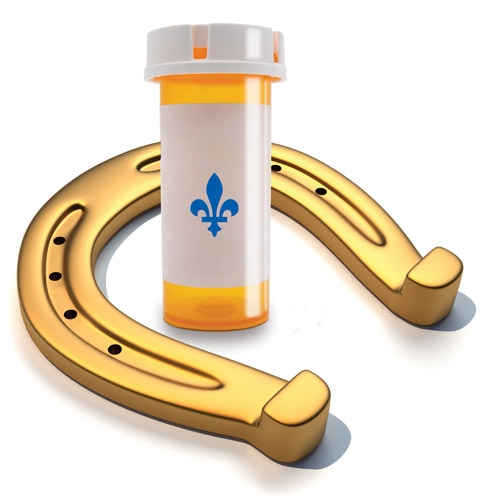
When Health Services Harm More Than Help
The dangers of overdiagnosis
“First, do no harm,” as suggested by Hippocrates, is a vital principle that should always guide physicians, but they are also well aware that in modern health care, whether in the form of drugs, operations, radiotherapy or any other form of treatment, there is always the possibility of causing harm to their patients. All drugs have potential adverse side effects and all surgery carries risk. Doctors and patients need to be reasonably satisfied that the likely balance of benefit and harm with any intervention is favorable.
Unfortunately, our ability now to test for and find insignificant abnormalities in people often leads to medical interventions that offer little or no benefit but still carry all the potential harms. Harm as a consequence of necessary treatment can be accepted, but exposing healthy people to harm from treatment that they should not have had in the first place is unacceptable.
An international effort is now underway to identify the specifics of this “overdiagnosis” problem, to raise professional and public awareness about it, and to attempt to bring it under control.
Many features of our societal culture conspire to cause overdiagnosis and overtreatment, including the enormous public appetite for medical services, the erroneous notion that earlier diagnosis always causes a better result, the fear and denial of death, the huge advances in technology bringing an ever-widening range of sensitive diagnostic tests, and the inevitable vested interests of drug and technology firms and of health care professions.
The public are bombarded with messages on what disease they don’t know they have yet, what drug they should be taking, and what they must urgently talk to their doctor about.
There are abundant examples in current medical practice. When enthusiastic specialty groups keep lowering the threshold level for calling a test for diabetes, kidney failure or high blood pressure abnormal, many more people are labeled with a disease. Drug firm advertising has convinced the public that cholesterol is a disease rather than a normal component of the blood. Normal human experiences, like grief, sadness, shyness, anxiety or hyperactivity risk getting you a diagnosis of a psychiatric “disorder” accompanied, of course, by a drug prescription. The dangers of sleeping pills and of antibiotics for viral infections do not seem to be understood by huge numbers of patients – and, unfortunately, many physicians also.
Overdiagnosis is a serious problem in screening for cancer, especially of the prostate, breast and thyroid. This has been a very hard lesson to learn in view of the high hopes and the resources that we have invested in screening programs as the way to reduce mortality from cancer. The initial hope for the benefit of breast (mammography) and prostate (PSA) screening has been tempered by the more recent evidence on the very small size of the potential benefit in relation to the substantial harm caused by false positive tests. For decades, these screening tests have led to biopsies revealing microscopic cells that are currently labeled as “cancer” by the pathologist, but with uncertain potential to cause any significant problem for the patient in the future.
A biopsy report using the “c” word inevitably causes fear and distress for the patient and, frequently, an aggressive treatment plan from the doctors. This problem – overdiagnosing cancer – is now widely recognized, even by the USA National Cancer Institute that recently issued a seminal report by an expert panel recommending that these uncertain “cancers” should instead be labeled “IDLE” (indolent lesions) until research can help us differentiate those that need treatment from those that do not.
Those working in the cancer field, including clinicians and pathologists will have to consider a new vocabulary, nomenclature and reporting language. At the very least, physicians need to share honestly with patients the serious uncertainty about the prognosis for these so-called “cancers,” rather than pretending that current treatments are always based on good evidence of benefit.
It is widely believed by health care analysts that a significant proportion of currently provided health services is inappropriate – whether due to overdiagnosis, overtreatment or unnecessary and repetitive testing and imaging. This represents a huge wasted resource –- health care dollars that could be spent productively elsewhere in the system – but even worse is the obvious fact that such services may not offer any benefit while subjecting patients to a wide range of all too familiar adverse side effects, risks and harms.
There is an urgent need for patients to be given more accurate and accessible information about the risks and benefits of health interventions, especially in screening programs involving normal healthy people with no signs or symptoms of disease. And remember the old adage, in health care as in many other things: more is not always better.
By Charles J. Wright
Charles J. Wright is an expert advisor with EvidenceNetwork.ca and Chair of the Ontario Health Technology Advisory Committee.








